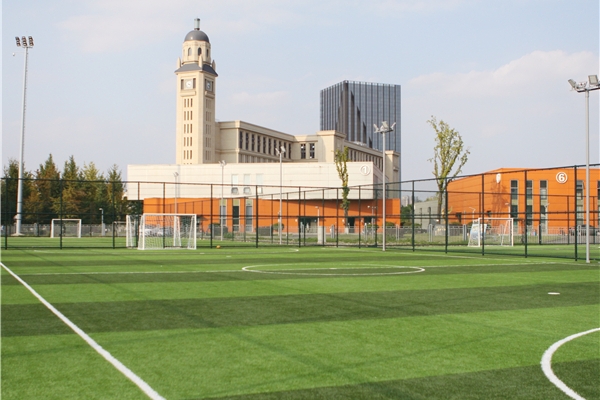即可将网页分享至朋友圈
人力资源部教师发展中心举办“学者论坛”系列学术活动,定期邀请与我校教师研究领域相关的知名学者,以专题报告的形式与师生分享和研讨最新研究动态和成果,旨在为教师提供学术探讨和交流的平台,开拓教师学术视野。现将第38期论坛安排如下,欢迎广大师生参加。
一、主 题
1、深度学习及视觉模式识别应用
2、Human Pose Estimation and Action Recognition
3、行人重识别
4、Low-Rank Subspace Clustering
二、主讲人
中科院自动化所 王 亮 研究员
北京大学 王亦洲 研究员
中山大学 郑伟诗 教 授
北京大学 林宙辰 教 授
三、时 间
2016年11月4日(周五)9:00-16:00
四、地 点
清水河校区图书馆求实厅(600人报告厅)
五、主持人
自动化工程学院/机器人研究中心 杨路 副教授
六、内容简介
深度学习及视觉模式识别应用:深度学习作为核心技术,正大幅度促进图像视频理解、语音识别、自然语言理解等诸多领域的极大进步。此报告首先对于深度学习背景做了一个简单介绍,然后重点介绍讲者近年来利用深度学习技术在视觉数据分析和理解方面所做的一些研究工作。
Human Pose Estimation and Action Recognition:We propose a layered-grammar model to represent actions. Using this model, an action is represented by a set of grammar rules. The bottom layer of an action instance’s parse tree contains action primitives such as spatiotemporal (ST) interest points. At each layer above, we iteratively mine grammar rules and “super rules” that account for the high-order compositional feature structures. The grammar rules are categorized into three classes according to three different ST-relations of their action components, namely the strong relation, weak relation and stochastic relation. These ST-relations characterize different action styles (degree of stiffness), and they are pursued in terms of grammar rules for the purpose of action recognition. By adopting the Emerging Pattern (EP) mining algorithm for relation pursuit, the learned production rules are statistically significant and discriminative. Using the learned rules, the parse tree of an action video is constructed by combining a bottom-up rule detection step and a top-down ambiguous rule pruning step. An action instance is recognized based on the discriminative configurations generated by the production rules of its parse tree. Experiments confirm that by incorporating the high-order feature statistics, the proposed method largely improves the recognition performance over the bag-of-words models.
行人重识别:行人重识别,又称行人再标识,是在多摄像机网络下实现跨视域行人追踪的关键支撑技术。虽然行人重识别面临诸多因素影响(比如光照、遮挡、视角等的影响),经过多年的研究,行人重识别已经获得了跨越式的发展。近年来,我们通过发展视域敏感的跨视域度量模型、深度先验正则化行人特征表达、以及基于视频的行人重识别模型,使得行人重识别的精度获得较大幅度的提高。但困难与发展是并存的,我们通过大量研究,发现行人重识别在残缺行人图像情况和开集测试下,会遭遇相当大的挑战。为此,我们针对这些新的问题,提出了局部相对比较度量学习模型,给出了克服这些问题的新思路。这次交流主要介绍我们最近一年的研究进展,希望能跟大家深入交流。
Low-Rank Subspace Clustering:In recent years, in parallel to sparse models, low-rank models also develop significantly, in particular in subspace recovery problems. Besides robustness, low-rank subspace recovery models may have closed form solutions. This property further makes low-rank models distinct from sparse models. The results are both surprising and elegant. Moreover, they also open doors to better solutions and faster numerical algorithms. In this talk, I will present my recent work in this line.
七、主讲人简介
王亮:博士,研究员,现任中国科学院自动化研究所模式识别国家重点实验室副主任。2015年获国家杰出青年基金。1997、2000年于安徽大学电子工程与信息科学系获得学士、硕士学位,2004年于中国科学院自动化研究所获得模式识别与智能系统专业博士学位。2004-2005年英国帝国理工学院计算机系RA,2005-2007年澳大利亚莫纳什大学电子与计算机系统工程系RA,2007-2009年澳大利亚墨尔本大学计算机科学与软件工程系RF,2009-2010年英国巴斯大学讲师。2000年入选中科院“百人计划”,回国任中科院自动化所研究员、博士生导师。获得奖项及荣誉称号包括:国际模式识别学会会士(IAPR Fellow 2014)、百人计划终期评估优秀(2015)、SCOPUS青年科学之星银奖(2011)、全国百篇优秀博士论文提名(2006)、中科院优博(2005)、北京市科学技术一等奖(2004)、中科院院长奖学金特别奖(2003)等。目前承担和参与的科研项目包括基金委面上项目、973计划等。
王亦洲:博士,研究员,博士生导师,现任北京大学数字媒体研究所副所长、数字视频编解码技术国家工程实验室新媒体应用研究室主任。1996年于清华大学获得学士学位,2005年从加州大学洛杉矶分校(UCLA)获得计算机科学博士学位,同年被美国Xerox Palo Alto研究中心(Xerox PARC)聘为研究员。2007年12月入选北京大学“百人计划”,加入北京大学信息科学技术学院计算机科学技术系数字媒体研究所。主要研究领域为计算机视觉、统计建模与计算、模式识别、数字视觉艺术。累计主持973计划项目课题、863计划项目课题、国家自然科学基金等科研项目十余项,担任IEEE Trans. on Cognitive and Developmental Systems期刊编委,在国际重要学术期刊和学术会议发表学术论文100余篇。2016年获批国家杰出青年科学基金。
郑伟诗:博士,中山大学教授,国家优秀青年科学基金获得者、英国皇家学会牛顿高级学者基金获得者、广东省自然科学杰出青年基金获得者、微软亚洲研究院青年学者铸星计划入选者。他主要面向视频监控下的行人身份识别与行为理解,展开视频图像信息处理的研究。在国内外较早和持续开展行人再标识的研究,发表一系列以跨视域度量学习为主线的研究工作。已发表/接受含5篇PAMI在内的80余篇主要学术论文,其中40余篇发表在IEEE TPAMI、IEEE TIP、IEEE TNN、PR、IEEE TCSVT、IEEE TSMC-B等和ICCV、CVPR、IJCAI等,曾发表ESI高被引论文3篇。近5年来,与国内外同行一道,在计算机学会推荐A类国际学术会议ICCV和CVPR等国际学术会议期间做Tutorial。他曾担任IEEE AVSS的Area Chair,担任2012年、2015年和2016年全国生物特征识别学术会议的联合程序委员会主席。
林宙辰:Zhouchen Lin received the Ph.D. degree in Applied Mathematics from Peking University, in 2000. He is currently a Professor at Key Laboratory of Machine Perception (MOE), School of Electronics Engineering and Computer Science, Peking University. His research interests include computer vision, image processing, computer graphics, machine learning, pattern recognition, and numerical optimization. He is an associate editor of TPAMI and IJCV. He is also an area chair of CVPR 2014/2016, ICCV 2015 and NIPS 2015 and a senior program committee member of AAAI 2016/2017 and IJCAI 2016。
八、主办单位:人力资源部教师发展中心
承办单位:自动化工程学院/机器人研究中心
欢迎广大老师和同学参加!
人力资源部教师发展中心
2016年11月1日
编辑:林坤 / 审核:罗莎 / 发布:一戈


